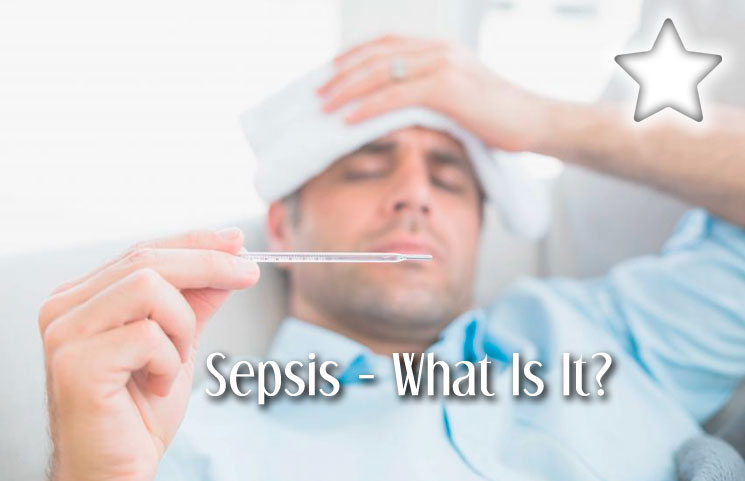Sepsis is a severe type of infection with a mortality rate of 25% to 70% (depending on the severity of your sepsis). Today, we’re explaining how to recognize sepsis, mitigate your risk factors, and maximize your chances of surviving sepsis.
What Is Sepsis?
Sepsis is a complication of severe infection characterized by a systemic inflammatory response. Basically, it’s a condition where your body reacts very negatively to an infection.
Mortality rates for sepsis are typically between 25% and 30% for severe sepsis. For those with septic shock, the mortality rate is between 40% and 70%.
Sepsis can occur throughout the body. However, the most common sepsis infection sites are in the respiratory, genitourinary, and gastrointestinal systems, as well as in the skin and soft tissue.
Symptoms Of Sepsis
Sepsis can occur gradually after an infection. Typically, the first symptom of sepsis is a fever. Fever leads to pneumonia, which then leads to sepsis.
By spotting the symptoms of sepsis within the first six hours, you can maximize your chances of surviving the condition.
How Do Doctors Treat Sepsis?
Sepsis is a highly-deadly condition that frequently kills people around the world. If you believe you or a loved one has any symptoms of sepsis, it’s crucial that you call 911 immediately. The sooner you get to a hospital and begin treatment, the more likely you are to survive.
Initial sepsis management includes respiratory stabilization followed by aggressive fluid resuscitation.
Doctors will also use vasopressor therapy when fluid resuscitation fails to restore adequate mean arterial pressure and organ perfusion.
In some cases, doctors may use antibiotics early to increase survivability. Antibiotics may be administered within one hour of suspected sepsis.
To correct coagulopathy and anemia, and to improve central venous oxygen saturation, doctors may use blood product therapy. Insulin therapy may also be used to maintain blood glucose levels.
Patients who don’t respond to vasopressor therapy may be administered corticosteroids.
Sepsis is Responsible for 20% of All In-Hospital Deaths Each Year
Sepsis is a very deadly condition. 1 out of every 5 in-hospital deaths occurs because of sepsis. More than 750,000 people across America are affected by sepsis every year, with a prevalence of 3 cases per every 1,000 persons.
Today, modern pharmacology and supportive care techniques have increased survival rates, which means the mortality rates for sepsis have never been lower. Nevertheless, approximately 1 in 4 severe sepsis cases are fatal, and 1 in 2 septic shock cases are fatal.
210,000 Americans die in hospitals each year from sepsis, which is approximately the same as the number of in-hospital deaths from sepsis.
What’s the Difference Between Sepsis, Severe Sepsis, and Septic Shock?
Sepsis is actually a broad term for a number of different systemic inflammatory responses to an infection.
The American College of Chest Physicians and Society of Critical Care Medicine lists four different conditions along the continuum of an inflammatory response. In other words, there are four different levels of severity according to your body’s response to an infection. Those stages include:
— Systemic inflammatory response syndrome
— Sepsis
— Severe sepsis
— Septic shock
In this continuum, septic shock is the most severe condition and has the highest mortality rate.
Systemic Inflammatory Response Syndrome
Systemic inflammatory response syndrome is identified when two of the four criteria are met. Those four criteria include fever, tachycardia, tachypnea, and leukocytosis or leukopenia).
Sepsis
To diagnose sepsis, doctors must identify an infection associated with systemic inflammatory response syndrome. Nevertheless, some patients who have sepsis do not meet the defined requirements of systemic inflammatory response syndrome.
Sepsis can often go unrecognized in its earliest and most treatable phase. Nevertheless, there are a list of symptoms doctors will check to ensure they don’t miss anyone with impending sepsis. These symptoms go in order from the most minor to the most severe symptoms.
Severe Sepsis
Severe sepsis is defined as when sepsis progresses to include impaired blood flow to body tissues or detectable organ dysfunction. This most-often manifests itself as low blood pressure. However, some patients develop severe sepsis even with a normal blood pressure reading.
Septic Shock
Finally, septic shock is defined as severe sepsis with a systolic blood pressure < 90 mm Hg or mean arterial pressure < 70 mm Hg, with this low blood pressure persisting even after doctors have performed fluid resuscitation.
Ultimately, sepsis is a deadly condition experienced by hundreds of thousands of people every year. It’s one of the leading causes of in-hospital deaths. Good doctors are trained to spot the symptoms of sepsis early on, which gives you the best possible chance of survival. If symptoms of sepsis aren’t spotted until you reach the septic shock phase, then survival rate drops to less than 50%.









